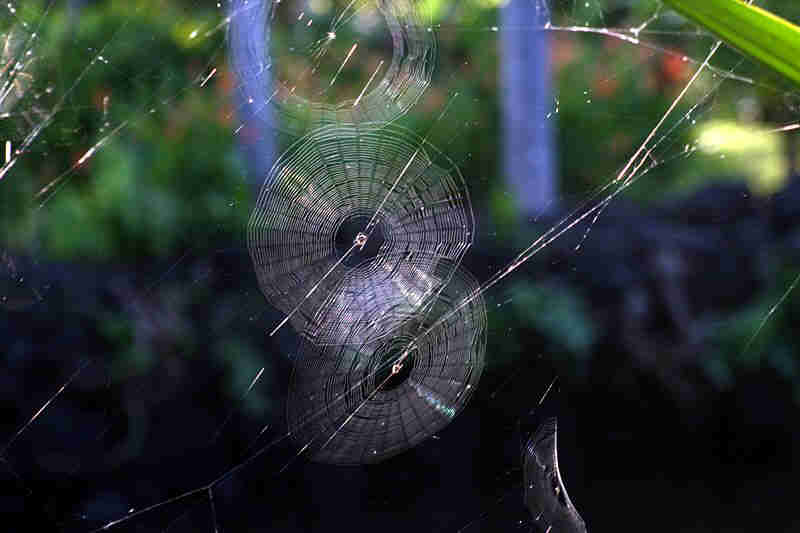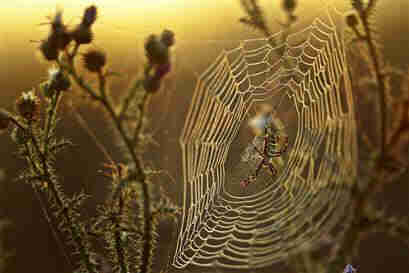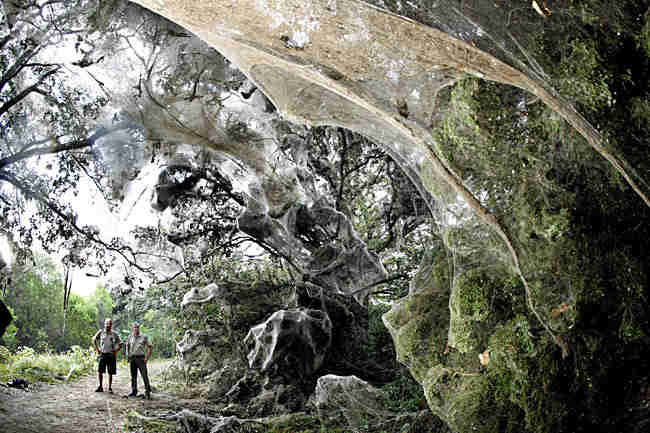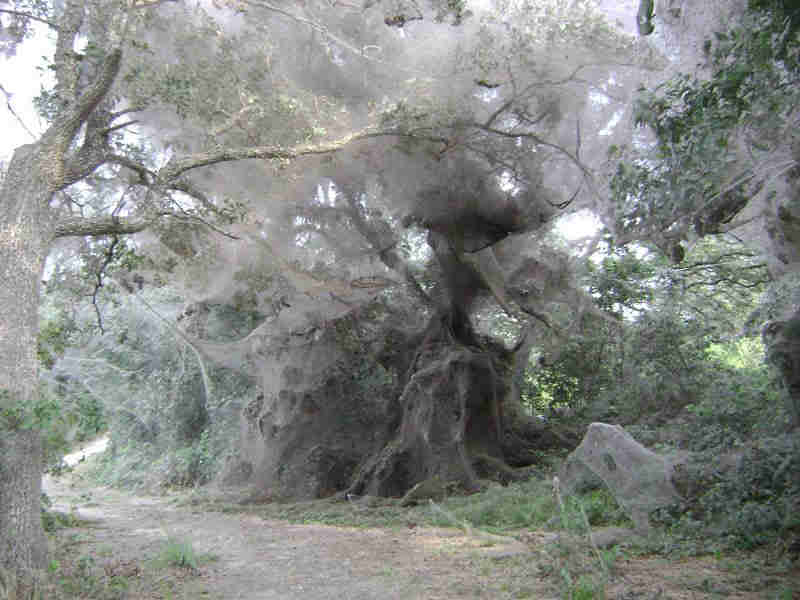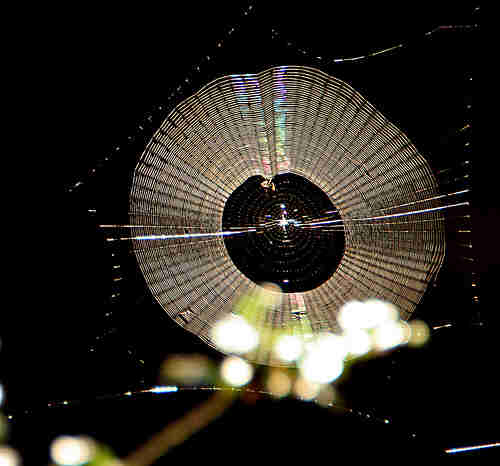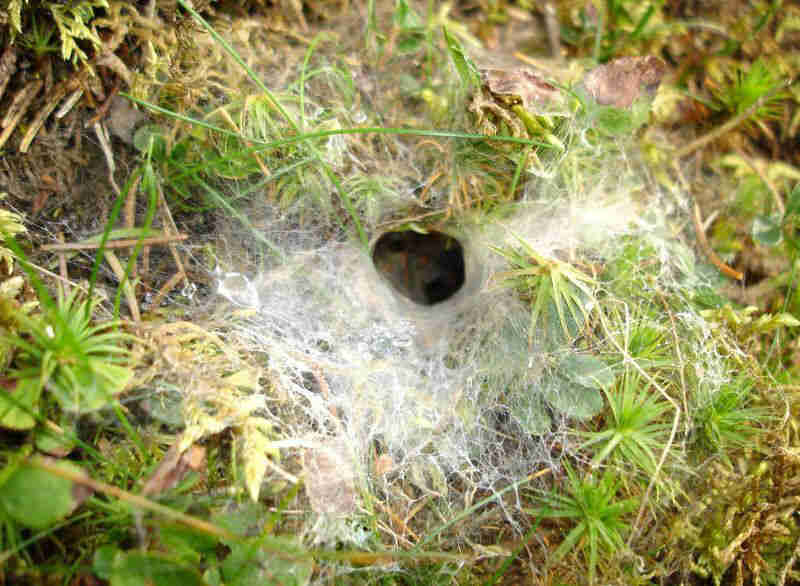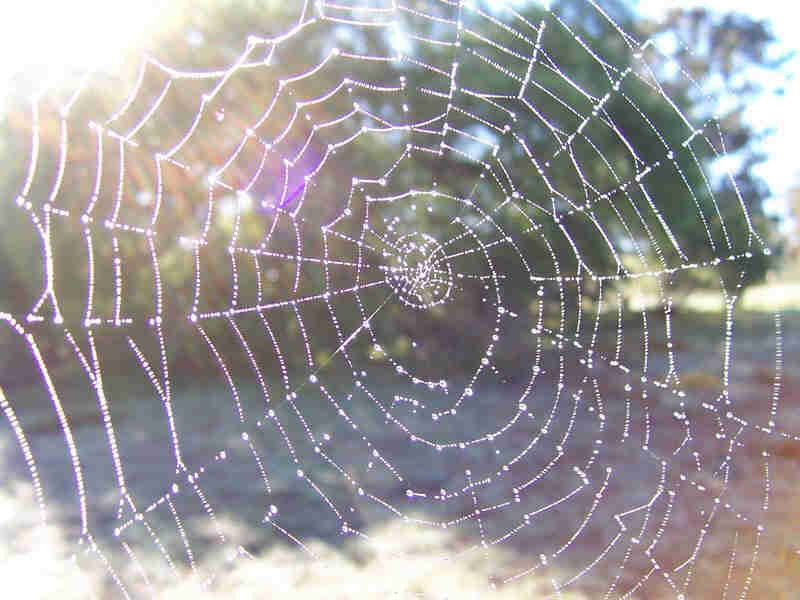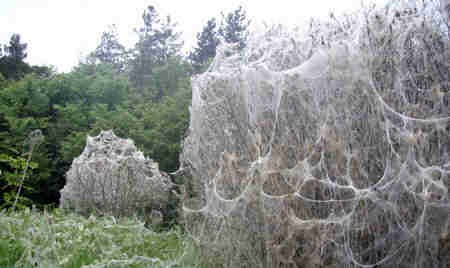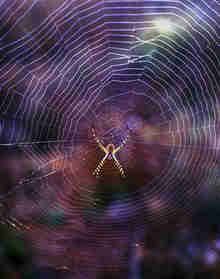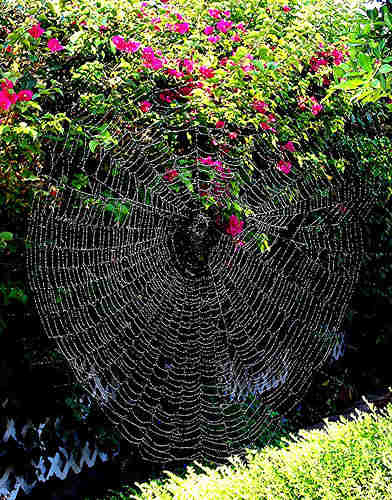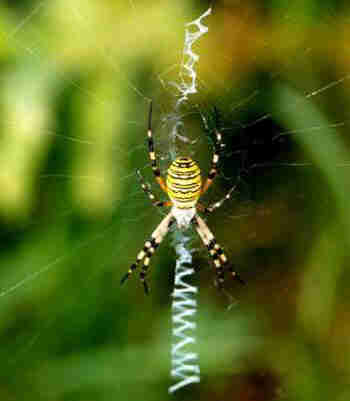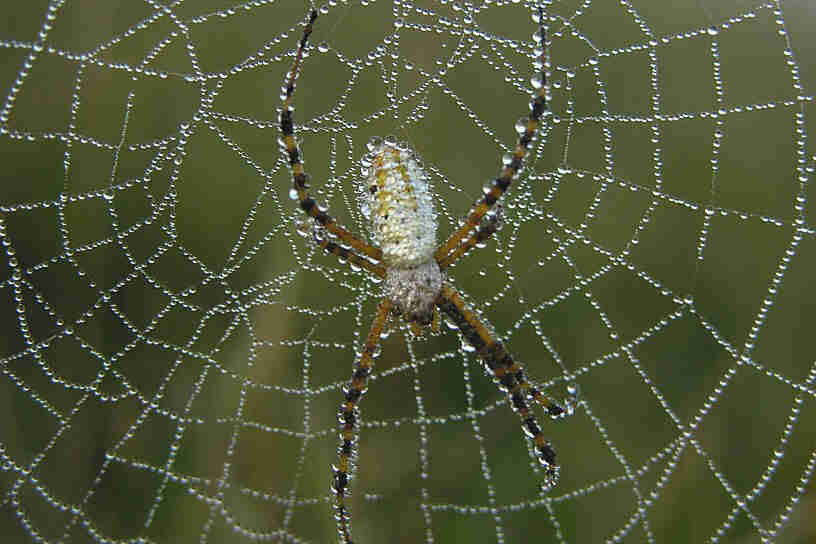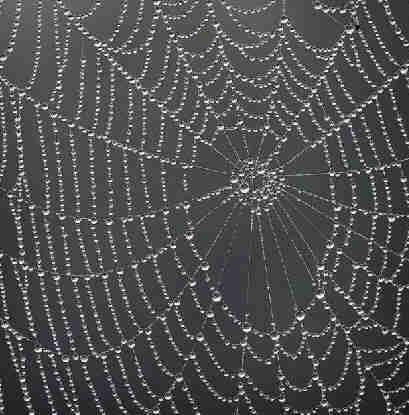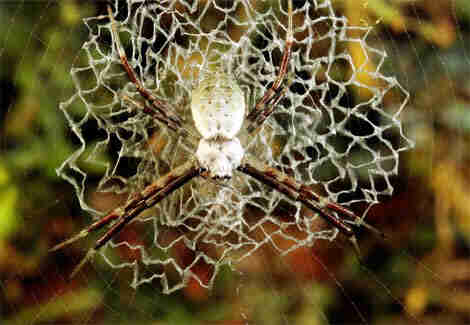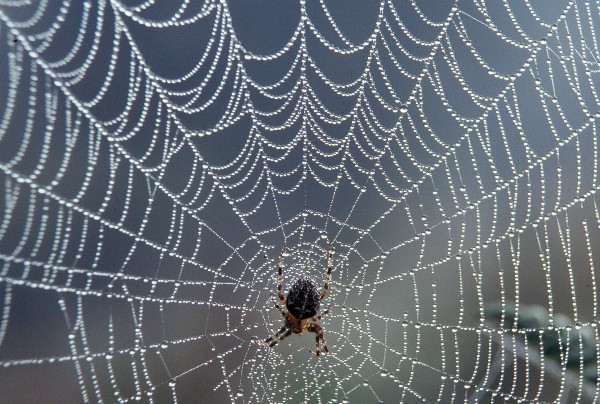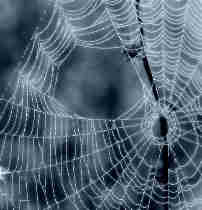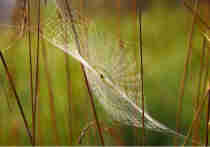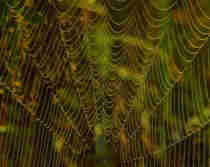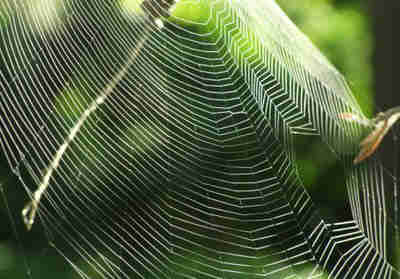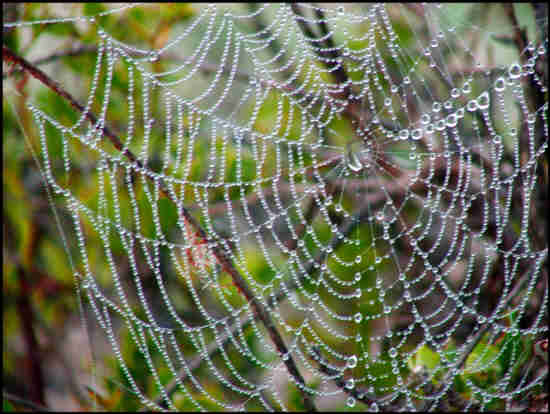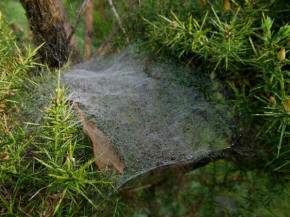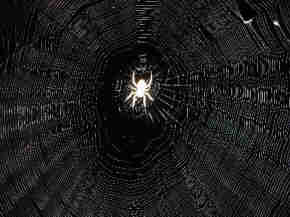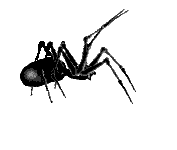

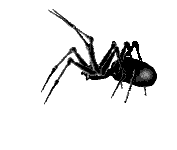
|
Spiders spin webs to trap insects because their vision is not very good. They know when prey is trapped on their web by detecting and reacting to the vibrations the line makes from their prey moving and trying to get free. Hunting spiders run after insects or lie in wait for them. Some hunting spiders spin simple webs that stretch out along the ground to catch insects. These spiders are grouped as hunters because they run after the insects that land in their webs. Webs have different purposes, according to the individual species of spider, how it captures or stores its prey. A Spiders Web is made from silk. Each spider can produce several different types of silk. Spiders are the only animals that use silk in their daily lives. Spiders have seven pairs of silk spinning organs or glands called “spinnerets” located either in the middle or at the end of their abdomen. Each spinneret on the spider is different from the other and used for making several kinds of silk: attachment disk silk (leaves a zigzag pattern and gives strength to the dragline), a strong dragline or safety line silk (gives the spider an anchor point), orb web spiral line (gives the web strength and stretchiness to catch flying prey), glue-like sticky catching silk (traps and keeps captured prey on the web), swathing silk (for wrapping and immobilizing prey), tangling cribellate silk (tangles the bristles, spines and claws of prey) and a protective egg sac silk (to keep baby spiders safe). The silk is
produced as a liquid, but emerges from the glands as solid silk fibres
when the spider moves away from the attachment point. A spider’s silk line
is only .001-.004 mm thick. Amino acids and protein crystals help the silk
maintain its stretchiness, stiffness and strength. The silk that spiders
produce are used for building webs, catching prey, storing food, escaping
from danger, making egg sacs, sending and receiving vibrating signals and
for transportation on silken ropes called “ballooning” as the spider
floats through the air on the strand of silk. This ballooning technique
ensures that young spiders are scattered about. If all young were to
remain in one tight area, many could starve from lack of food for number
of spiders and insects in a given area. Some silk strands are stronger than steel strands of the same thickness. The silk of the Nephila spider is the strongest natural fibre known to man and is used to make tote bags and fish nets. In a specific species, spiders can use their web to capture an air bubble; with this bubble the spider can survive and hunt under water where other spiders and insects would drown. |
How a spider makes a web
